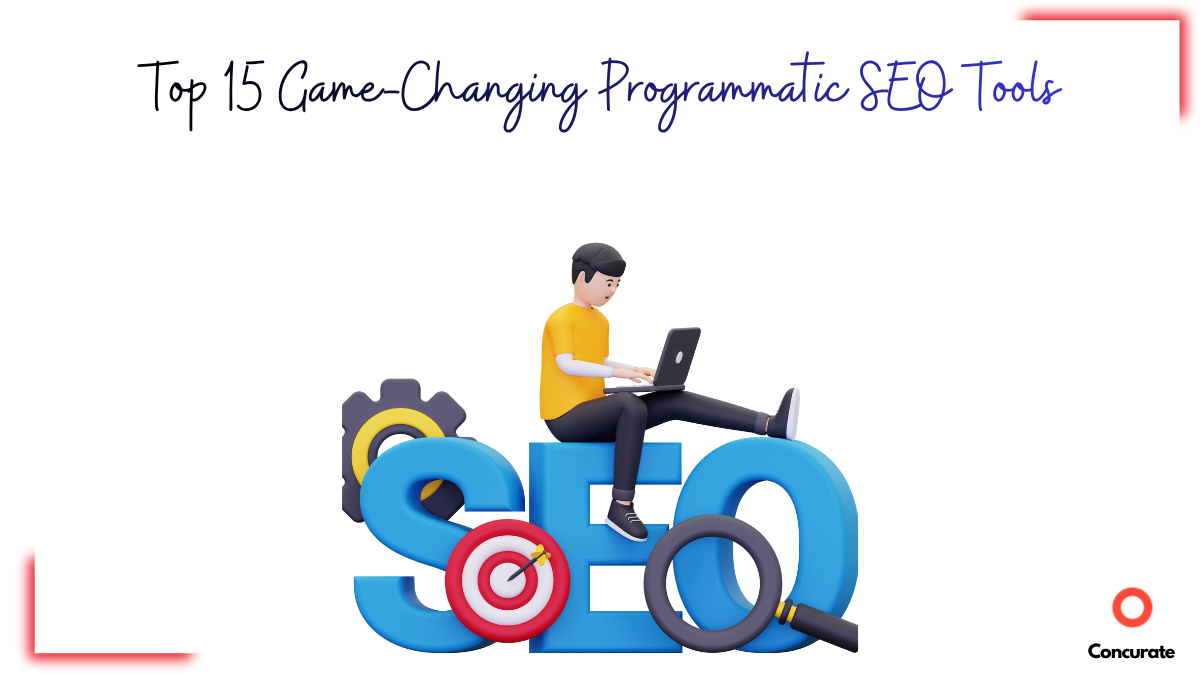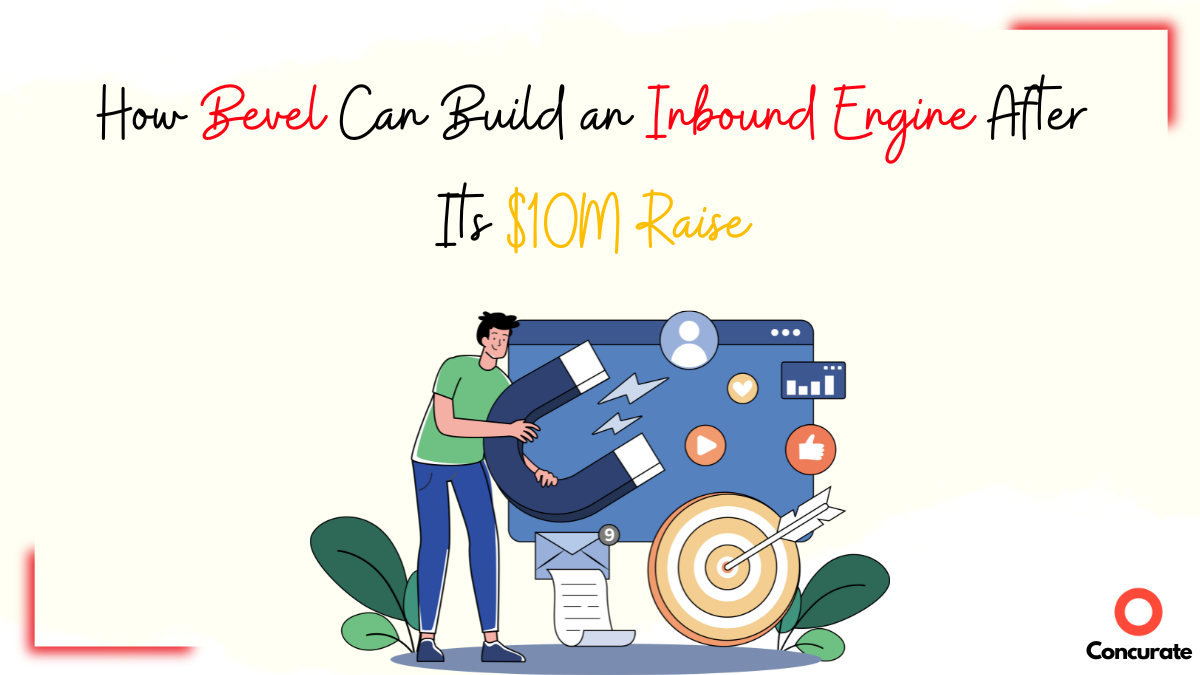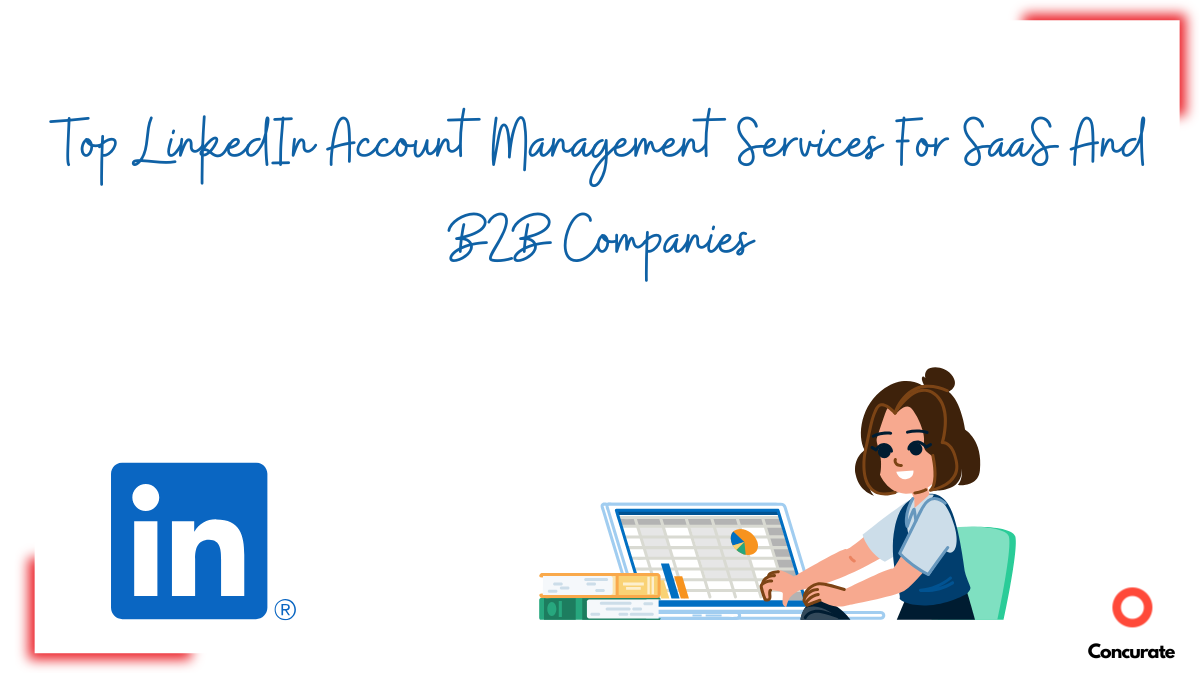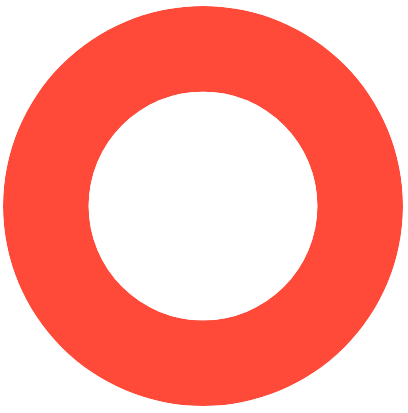Your SaaS product is solving a real need. You’ve built something customers love.
But your content? It’s not getting seen.
You’ve spent time and money publishing blogs, guides, and SEO pages.
And still… barely any traffic. No leads. No demo requests.
Meanwhile, Oxylabs is pulling in 142,000+ organic visits every month; with just 10 focused pages.
No massive blog. No guesswork. No waste.
They’re showing up at the top of Google for high-intent keywords like “residential proxy” and “buy SOCKS5 proxy”; the kind of searches made by people ready to buy.
Instead of bombarding their audience with content for content’s sake, Oxylabs has refined their approach to content creation with these key elements:
- Problem-solving content that directly addresses customer needs
- Targeting high-intent search queries where users are ready to convert
- Utility-driven resources that answer specific questions or solve particular pain points
What’s the result? They’re ranking for critical keywords that deliver not just traffic, but qualified leads.
And in this teardown, we’ll show you exactly how they did it.
Oxylabs’ SEO Snapshot: Key Metrics at a Glance
| Organic Traffic (Monthly) | 142K |
| Domain Rating (DR) | 72 |
| Backlinks | 16.6K |
How Oxylab’s Captures Traffic: Breaking Down the Sources
#1 Branded searches: 75.2K visits (Users already familiar with the brand)
#2 Non-branded searches: 66.8K visits (Capturing users before they know the brand)
#3 Informational searches: 98.7K visits (Users seeking knowledge and insights)
#4 Navigational searches: 68K visits (Users looking for a specific website or page)
#5 Commercial searches: 88.5K visits (Users researching before making a purchase)
Traffic MVPs: Top Pages Driving Oxylab’s Success
| Page | Keyword | Position | Monthly Traffic |
| What is a Residential Proxy | what is a residential proxy | 2 | 50,646 |
| Web Scraping Proxies | proxy scraper | 19 | 7,707 |
| Residential Proxy Pool | residential proxies | 1 | 6,742 |
| Proxy SwitchyOmega Integration | proxy switchyomega | 7 | 4,534 |
| Tamilyogi Proxy | tamilyogi proxy | 4 | 4,345 |
| Difference Between Datacenter & Residential Proxies | what is a residential proxy | 11 | 4,268 |
| Mobile Proxies | mobile proxy | 2 | 2,737 |
| SOCKS5 Proxies | buy socks5 proxy | 1 | 2,735 |
| Python Web Scraping | python web scraping | 6 | 2,144 |
What’s Working for Oxylabs?
#1 Educational content dominates, with the “What is a Residential Proxy” page ranking #2 for a high-intent keyword, pulling in 50K+ visitors monthly.
#2 Branded searches pay off, as the homepage holds the top spot for “Oxylabs,” capturing 45K+ visitors who already trust the brand.
#3 Niche insights drive traffic, with the “Web Scraping Proxies” page ranking for “proxy scraper,” tapping into an audience seeking specialized solutions.
Oxylabs Wins with Search Intent
#1 Authority-building keywords deliver, as the “Residential Proxy Pool” page secures the #1 spot for “residential proxies,” bringing in thousands of visitors.
#2 Strategic integrations matter, with the “Proxy SwitchyOmega” page driving targeted searches for proxy configuration.
#3 Technical comparisons work, as the “Difference Between Datacenter & Residential Proxies” page educates users while pulling traffic for competitive queries.
Oxylabs’ Backlink Strategy
| Metric | Value |
| Total backlinks | 16.6K |
| Referring Domains | 3.7K |
| High-Authority Links | Links from Google, Forbes, Github |
Insights
#1 Backlinks from Google, Forbes, and GitHub boost Oxylabs’ credibility in tech and data scraping.
#2 3.7K referring domains show diverse link-building efforts, strengthening overall authority.
Backlinks from authoritative cybersecurity websites also play a major role in SEO. See how the top cybersecurity software companies dominate search rankings through strong link-building strategies.
Traffic by Location
| Country | Monthly Visits | % of Total Traffic |
|---|---|---|
| United States | 49.4K | 34.8% |
| India | 18.2K | 12.8% |
| Indonesia | 14.6K | 10.3% |
| Brazil | 7.3K | 5.1% |
| United Kingdom | 5.8K | 4.1% |
Insights
#1 The U.S. drives over one-third of total traffic, solidifying its lead market position.
#2 Indonesia and Brazil show strong growth, indicating increasing demand outside traditional regions.
Traffic Breakdown
| Source | Value |
| Organic Search | 142K |
| Paid Search | 438 |
Oxylabs’ Technical SEO: Site Performance Breakdown
Core Web Vitals (Desktop):
Largest Contentful Paint (LCP): 1.4s (Good)
Cumulative Layout Shift (CLS): 0.01 (Near Perfect)
Interaction to Next Paint (INP): 70ms (Good)
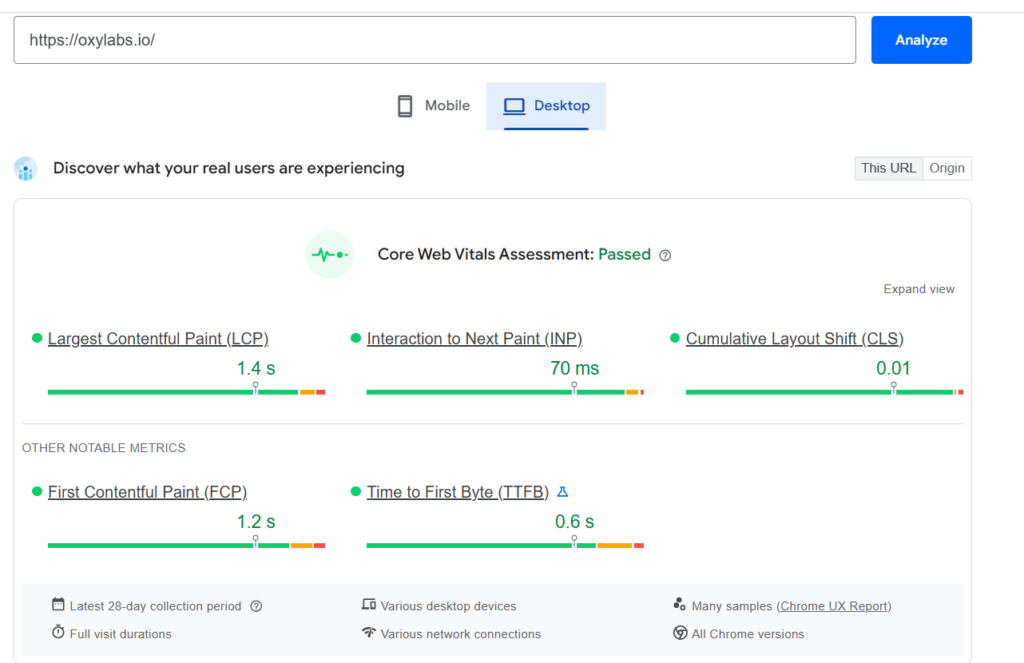
Source: PageSpeed Insights
Insights
#1 With a 1.4s LCP, Oxylabs ensures a smooth user experience.
#2 A near-perfect 0.01 CLS prevents unexpected shifts, keeping interactions seamless.
Paid Search Strategy: Where Oxylabs Invests in PPC
Focused on high-intent users: Bidding on terms like “proxy services” and “paid proxies” targets users ready to buy.
Top Keywords Oxylabs Is Bidding On:
#1 “socks5”
#2 “proxy socks5”
#3 “proxy services”
#4 “paid proxies”
#5 “fastest proxy”
#6 “proxy providers”
#7 “scrapping google scholar”
Insights:
#1 Technical audience in mind: Keywords like “socks5” and “proxy socks5” cater to advanced users needing specific solutions.
#2 Expanding reach: Targeting “scraping Google Scholar” aligns with the growing demand for academic and research-based data extraction.
5 Reasons Oxylabs Gets 140K+ Organic Monthly Visits

#1 Dominating Educational Search Queries
Oxylabs’ “What is a Residential Proxy” page ranks #2 for a high-intent keyword, bringing in over 50K visitors per month. They focus on educational content to capture users at the awareness stage.
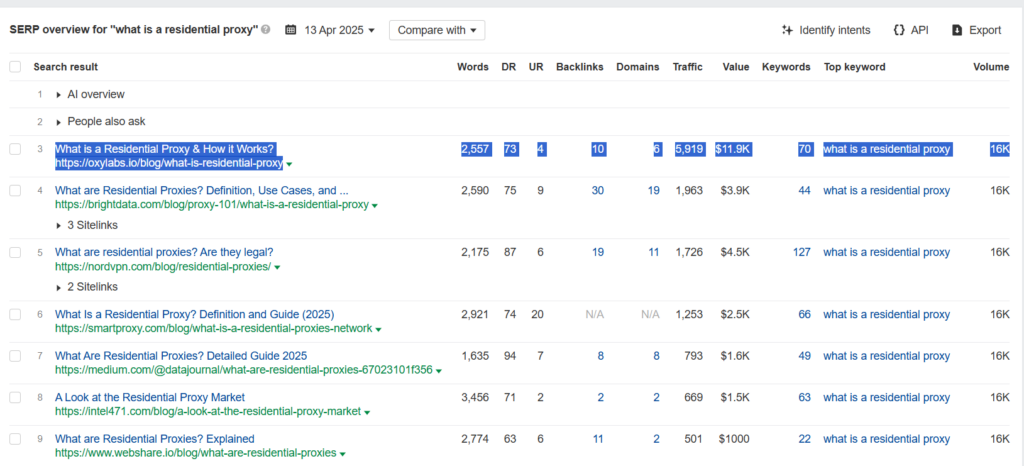
What Oxylabs Did Right:
● Identified top-of-funnel questions their audience actually Googles
● Built a clear, SEO-optimized explanation (no fluff, no jargon)
● Used subtle product mentions and internal links to lead readers deeper
SaaS Playbook: Things To Learn
● Find your industry’s “What is…” queries (e.g., “What is SSO?”, “What is CI/CD?”) using Ahrefs or Semrush
● Create a clean, scannable 2,000+ word explainer; not a Wikipedia clone
● Add smart CTAs throughout: “See how [Your Tool] handles this”
● Link to deeper use cases, product pages, and comparison pages
● Use schema markup and FAQs to grab featured snippets
Takeaway: Creating in-depth, SEO-optimized educational content can help you rank for industry-specific queries and drive high-volume traffic.
#2 Leveraging Brand Authority for Search Traffic
With 75.2K visits from branded searches, Oxylabs ensures its homepage ranks #1 for “Oxylabs.” This strong brand presence means users searching for their name find them first; not a competitor.
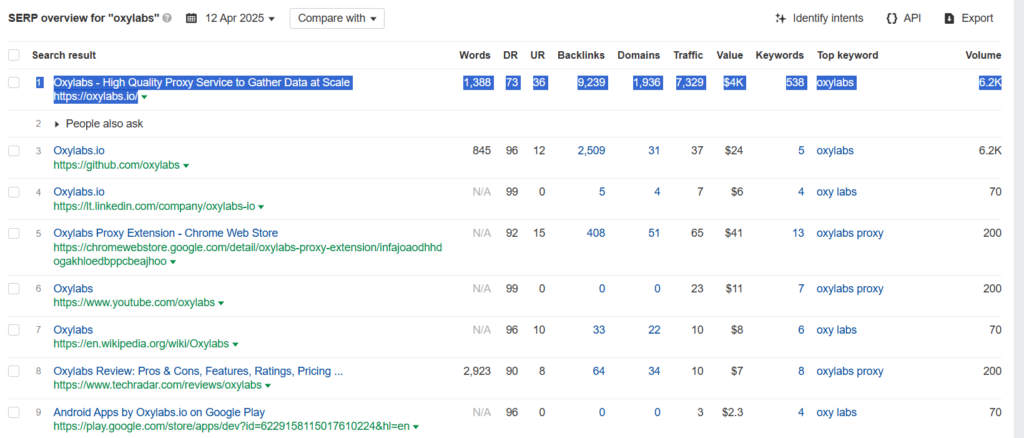
What Oxylabs Did Right:
● Optimized their homepage for branded search (fast load, clear messaging)
● Earned backlinks from trusted tech sources to boost authority
● Used structured data (logo, social profiles) to strengthen SERP presence
● Maintained PR efforts to keep branded search volume growing
SaaS Playbook: Things To Learn
● Make sure your homepage includes your brand name in the title + H1
● Build out supporting pages: “[Brand] reviews,” “[Brand] vs competitors,” “[Brand] pricing”
● Use digital PR and guest posts to drive branded mentions + backlinks
● Run retargeting ads on your own brand keyword to keep competitors out
● Monitor branded search traffic monthly; it’s a leading indicator of awareness
Takeaway: Strengthening brand awareness through marketing and PR can increase branded searches and secure direct traffic.
#3 Targeting Niche, High-Intent Keywords
Oxylabs ranks #1 for “residential proxies” and #1 for “buy SOCKS5”. These are high-intent, commercial keywords that attract users ready to purchase proxy solutions.
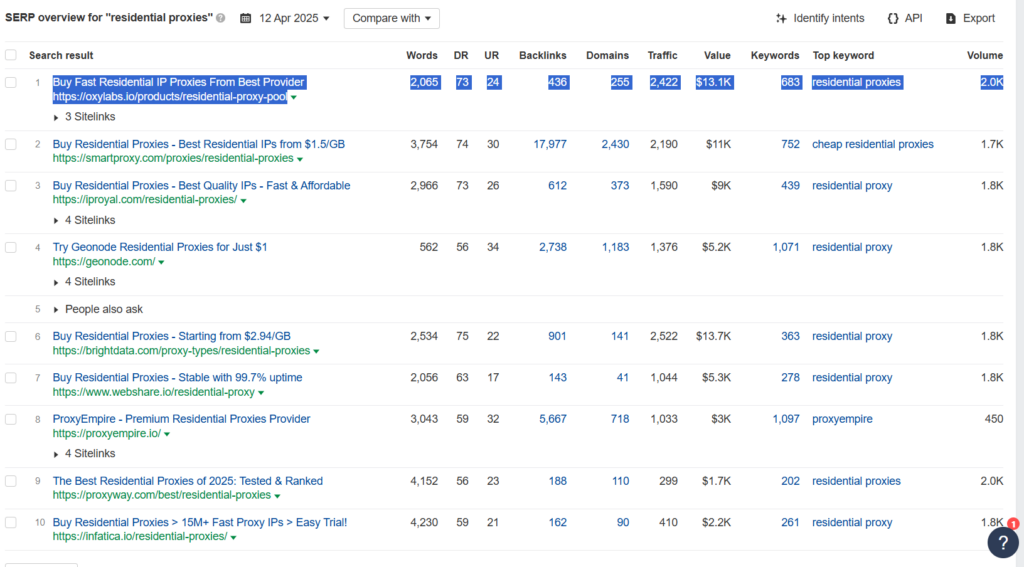
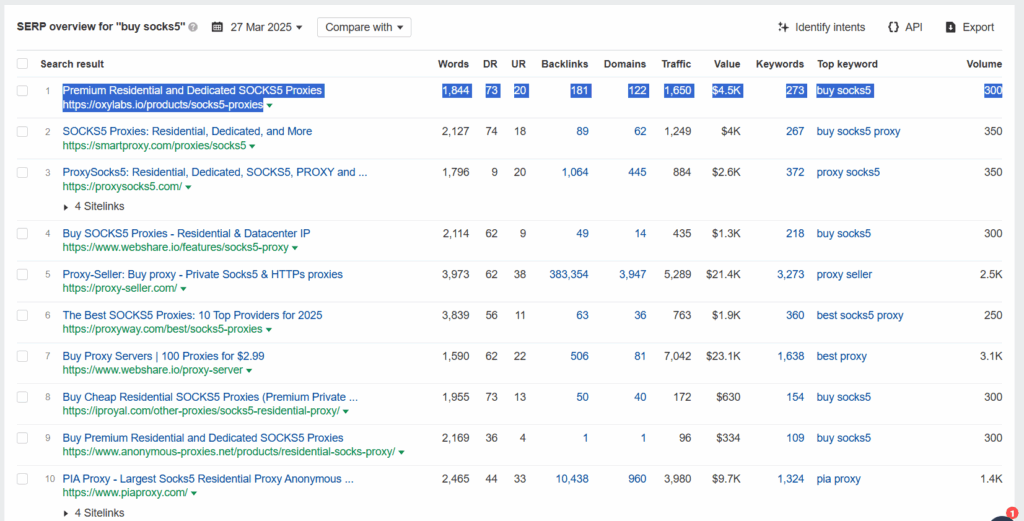
What Oxylabs Did Right:
● Identified the exact terms buyers use when they’re ready to purchase
● Created product pages optimized for conversions (fast, focused, clear CTAs)
● Matched intent; the pages are transactional, not educational
● Used keyword-rich URLs and titles: /buy-socks5-proxy
SaaS Playbook: Things To Learn
● Use Semrush or Google Ads to find keywords with “buy,” “software,” or “tool” in them
● Build dedicated landing pages for each: “Buy [Product Type]” or “[Use Case] Software”
● Optimize for speed, mobile UX, and strong CTAs (“Start Trial,” “Get Demo”)
● Link to these pages from blog posts, homepages, and comparison pages
● Test titles: “#1 [Product Category] for [ICP]” vs “Buy [Product Type]”
Example from SaaS: Loom ranks #1 for “screen recording software”; a high-intent query that lands users on a product-focused page with instant conversion paths. Learn from their strategy.
Takeaway: Informational traffic feeds your funnel. Commercial traffic feeds your pipeline.
#4 Building Backlinks from High-Authority Sources
Oxylabs has secured backlinks from Google, Forbes, and GitHub, boosting its domain authority and credibility in the tech space. With 16.6K total backlinks, they reinforce their position as an industry leader.
What Oxylabs Did Right:
● Created reference-worthy content (API docs, technical explainers, use cases)
● Partnered with platforms like GitHub where developers naturally link
● Earned media coverage from top tech outlets through PR efforts
● Avoided shady link schemes; their backlink profile is clean and credible
SaaS Playbook: Things To Learn
● Publish original data (surveys, benchmarks) that media will quote
● Create technical guides that developers want to bookmark and share
● Pitch use cases to journalists covering your industry niche
● Repurpose content as GitHub repos, Notion docs, templates (link magnets)
● Track referring domains monthly; not just backlink counts
Takeaway: One link from Forbes > 100 links from no-name blogs. Authority beats volume every time.
#5 Smart Paid Search Strategy for Conversions
Oxylabs doesn’t just rely on organic traffic. They bid on high-intent keywords like “proxy services” and “paid proxies” to target users already looking to make a purchase.
What Oxylabs Did Right:
● Picked keywords with bottom-funnel intent and clear ROI
● Sent traffic to focused landing pages, not their homepage
● Combined paid + organic on the same keyword to dominate the SERP
● Didn’t overspend; they bid where it counts
SaaS Playbook: Things To Learn
● Use Google Ads to target transactional queries (“[tool] for SaaS,” “best [category] software”)
● Start with competitor name campaigns; convert their traffic into your leads
● A/B test landing pages weekly: headline, CTA, offer
● Combine search + retargeting to stay top of mind
● Use paid traffic to test keyword viability before investing in SEO
Example from SaaS: ClickUp runs paid ads for “Monday.com alternative”; a competitor keyword; and lands users on a side-by-side comparison page with a strong CTA. Copy their SEO strategy.
Takeaway: If buyers are ready to purchase, ensure your solution appears at the right moment.
Turn SEO Into a Revenue Channel, Not a Reporting Metric
Your buyers are Googling solutions. If your content isn’t ranking or converting, they’re choosing your competitors.
At Concurate, we build SEO strategies that drive real pipeline. Not content volume. Not vanity traffic. Actual leads.
We create expert-led content that rank for high-intent keywords, earn buyer trust, and move prospects closer to the deal.
If your blog feels like a cost center, let’s change that.
Get a free teardown with three data-backed opportunities to grow traffic and revenue. No fluff. Just what works.
Let’s make SEO your best-performing growth channel.
Disclaimer:
This article is an independent analysis based on publicly available data regarding Oxylabs’s SEO strategy. It is not endorsed by, affiliated with, or sponsored by Oxylabs Inc. All trademarks mentioned are the property of their respective owners.



